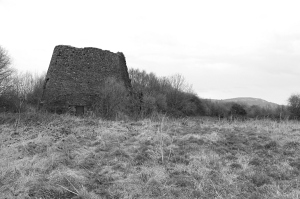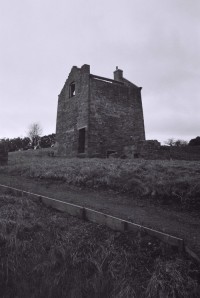You are currently browsing the category archive for the ‘Industrial archaeology’ category.
Although we might think of Wrexham as a largely industrial town, with the Brymbo district as its economic powerhouse through much of the 19th century, the Industrial Revolution in north Wales was actually something of a damp squib. A. H. Dodd’s classic text on the subject, first published in the 1920s, explained some of the reasons why: remote sites and poor communications restricted trade to the local area, whereas the coal and iron of south Wales had access to deep-sea ports (giving particularly direct access to the lucrative Irish market). The collieries west of Wrexham, old, smaller-scale workings on shallow seams, were a world away from the deep mines of the Rhondda, and Brymbo’s steelworks was unusual in its hilly, land-locked site. By the 1900s many of the area’s coal and iron operations had ceased.
The small-scale and localised development of industry in the district led to a distinctive landscape, where a patchwork of agricultural land was intermingled with small collieries, related industries such as brickworks, and villages spreading across former areas of common land. The last of these smaller scale industrial sites survived through to the 1950s, 60s and 70s; in Brymbo, a particularly interesting one lasted until the 1980s. There are now few buildings near Pentresaeson crossroads, and there were never very many, but you can still see one of the main landmarks of the immediate area, the old Taylor Brothers iron foundry and its distinctive chimney, just down the township road to Bwlchgwyn alongside the bed of the former Minera railway line. Back in the 19th century this would have been a good site for a small ironworks, with reliable supplies of coal in the immediate vicinity, a tributary stream of the Gwenfro running nearby and, from the 1840s, the railway giving vital access to outside markets. However the history of the building is not well recorded and there is still a lot of work to be done on establishing its exact origins.
The focus of this blog is mainly on the Brymbo of the 18th century and earlier: that obscure time before the iron and mining industries began to have their most dramatic effect on the landscape and population of the township.
However, as part of filling out my notes on the Rhos, as I’ve called it – the rough, mine-scarred pastureland between Brymbo Hall and the Glascoed – I’ve dealt with a lot of history relating to John Wilkinson‘s time and afterwards. Two of the three main remaining landmarks of the Wilkinson era, the Penrhos engine house and the “Bottle” chimney, lie within this area.
John Wilkinson is, by a long way, the most well-known of the area’s early industrialists, the men who oversaw the first transformation of the area from an essentially rural one into one of the centres of the Industrial Revolution in Wales. This is understandable, given the importance of the ironworks he single-handedly established. However, there were many other figures in this early generation of iron- and coalmasters who played a part in developing the mineral resources of the Denbighshire hills. They came from a variety of backgrounds – small landowners, or the sons of the first generation of furnace-owners – but by the early years the 19th century they had risen hugely in status on the back of their mineral wealth (and the labour of thousands of colliers, lead miners and ironworkers). Some of them were closely involved with our small area of study, Brymbo.
This post is the first in an occasional series on the coal industry in Brymbo.
As I’ve previously mentioned, Brymbo’s first appearances in the records are often in connection with coal – as with the 16th century account of Leland, who in passing mentions “se-coles at Harwood”. Later, the township was for a time the epicentre of mining activity in the Denbighshire coalfield. It was then the most important and productive mining area in North Wales, and hundreds of men worked there underground (in appalling conditions, for the most part). The very intensity, and the early commencement, of this activity meant that by the early 20th century, many of the mines had been worked out. Even so, there were enough coal reserves left that the period after the Second World War saw a series of opencast workings that further scarred the landscape.
It’s nearly impossible to talk about the history of Brymbo without mentioning John Wilkinson at some point. Though there seem to have been coal-pits in the area from mediaeval times, and though previous owners of the Brymbo estate might have tried to make money from minerals (such as Robert Griffith with coal, and Arthur Owen with lead), Wilkinson was the first to make an obvious success of it. It was through the expansion of his holdings, as we have seen, that much of the upper part of the township was turned from common and waste into farmland. Lastly, his bringing together of the particular resources of the locality – ironstone, coal, and limestone from the nearby mountain, along with plenty of fast-flowing water – laid the foundations of an industry that would come to define the area for the best part of two hundred years.
Plenty has been written about Wilkinson already, of course. There has been at least one detailed biography, and Alfred Palmer’s article John Wilkinson and the Old Bersham Iron Works, published in 1897-8 in the Transactions of the Honourable Society of Cymmrodorion, gives a huge amount of detail about both the works at Bersham and his later enterprise at Brymbo. Nevertheless it is probably worth talking about Wilkinson a little, if only because – as I mentioned at the start – he cannot be ignored.



